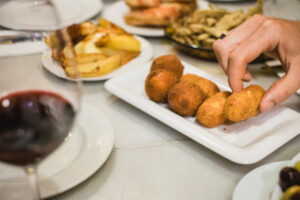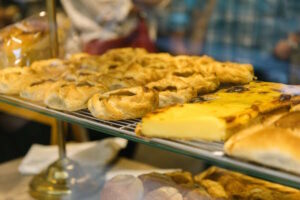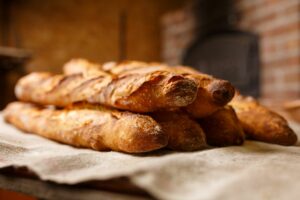Last Updated on October 29, 2025 by Maika Cotton | Published: December 9, 2019
Enter through a laundromat, a pizza place or an Indian restaurant; the basement of a creperie, the back of a mezcaleria or through a dimly-lit red door on a street in Le Marais.
Behind the graffitied facade of what seems to be a crumbling edifice in Strasbourg-Saint Denis, you’ll find one. Or in the back of a tiny taco shop, another.
The speakeasy has made its way to Paris.
Hidden bars, or “speakeasies,” were originally an American invention, designed in the 1920s for moonshiners looking for a fix during a time when alcohol was prohibited. In those days, they were the lairs of mustachioed men in bowler caps and women dressed as flappers.
Nearly a century later, the idea has gone global. There are speakeasies in New York, London, Singapore. Just about anywhere people drink cocktails, there is a hidden bar. Paris hasn’t been immune to this trend, going from just one or two hidden bars in the early 2010s to at least a dozen today.

An American trend in Paris
So, what is it about the speakeasy that has people lined up outside of a laundromat at 10 p.m. on a Thursday in November, as I recently found myself and a group of my friends?
“I don’t really know, to be honest,” Romain le Mouellic, a member of the group Barmen With Attitude and one of the founders of Le Syndicat, a speakeasy in the 10th arrondissement, tells me. “I know that the speakeasy, at its base, is a concept that comes from the United States. But for me, the real thing about it is that people simply like to be in places that aren’t open to the public, that are a bit hidden from the view of everyone.”
Le Syndicat, which is hidden behind an unmarked door covered with peeling posters and graffiti, frequently makes lists of Paris’ top speakeasy bars. Inside, a mix of foreigners and locals drink €12 cocktails from a revolving menu that’s devised by local bartenders who use local products, from Normandy calvados to whiskey from Brittany.
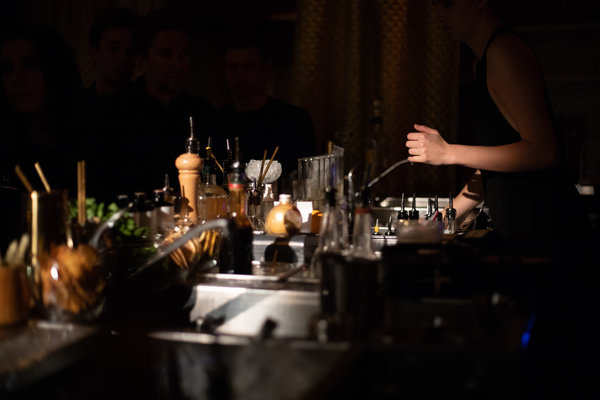
Cocktails make a comeback
Taking a concept popular to New York and transplanting it to Paris was never really the idea, le Mouellic says. Rather, Le Syndicat and its sibling bar La Commune, which is also run by Barmen With Attitude, aimed to launch something that kept its sense of place, but could also attract people from all over the world.
The current drink menu, for example, includes cocktails that reflect some of France’s major holidays, such as the Fête de la Saint-Jean (the Feast of St. John) or the Fête de Breton (a cultural event celebrating the region of Brittany).
“We really reflect on what it means to have a French cocktail, made in Paris.”
Romain le Mouellic
The history of the cocktail, le Mouellic says, is inherently tied to Paris. “People don’t really remember this, but the cocktail is historically a French product. By that I mean that there have been great periods of the cocktail in French history, notably after the second World War,” he says.

The drink, quite popular in post-war France, became less so with the emergence of the wine lobby, and many spirit distillers began to export their products, rather than sell them domestically. By 2000, only Harry’s New York Bar and a few others made cocktails in Paris.
In the early 2000s, one would have been hard pressed to find a good cocktail in Paris—let alone a good cocktail at a speakeasy—outside of fancy hotel bars. That changed in 2007 with the Experimental Cocktail Club, launched by a group of French entrepreneurs who wanted to democratize the drink. The Experimental Cocktail Club was not so much a hidden bar, but rather a section of a different bar tucked behind a curtain.
RELATED: The 6 Best Bars in Paris for Any Night of the Week
It was Candelaria, which opened in 2011 on a quiet side street in le Marais, that was considered to be the first true speakeasy in Paris.
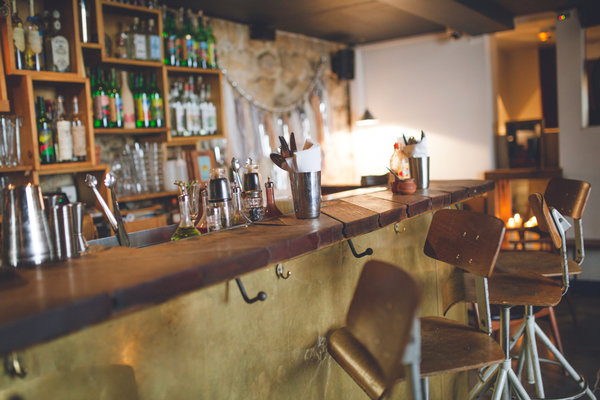
Launching a speakeasy “wasn’t the idea to begin with,” says Joshua Fontaine, who founded Candelaria along with two business partners in 2011. “There was just kind of this weird space that we found and there weren’t any cocktail bars in the area.”
They initially set out to start a traditional sort of Mexican bar and restaurant (“there wasn’t any good Mexican food at the time,” Fontaine says), but the odd layout of the space made them rethink the concept. Eventually, they settled on a small taco shop up front and a sleek metallic door near the counter that leads to the hidden bar, which can seat up to 26 people at a time. It was already filling up when I stopped by on a recent Wednesday evening around 6 p.m.

Off the beaten path—and hidden in plain sight
Fontaine echoes le Mouellic when I ask about how the speakeasy concept grew to be so popular and why he thinks it works in Paris.
“I mean, alcohol is not banned anywhere now, and people open speakeasies in New York and everywhere else in the world,” he says. “I think it’s just kind of the delight in finding something that maybe you kind of have to know about, or that’s a little bit off the beaten path.”
Indeed, some speakeasies are easier to find than others. To get into Blaine in the stylish 8th arrondissement, you’ll have to whisper a password. Moonshiner, also near Republique, is in the back of a functioning pizza shop. Baranaan is one of the biggest speakeasies, but it’s also a bit further from the center at the Porte Saint Denis.
To le Mouellic, the rise of the speakeasy is simply a matter of taste. “These are things that are universally pleasing: a nice glass, a good alcohol, the aesthetic, the association of the taste,” he says. “It’s logical.”
